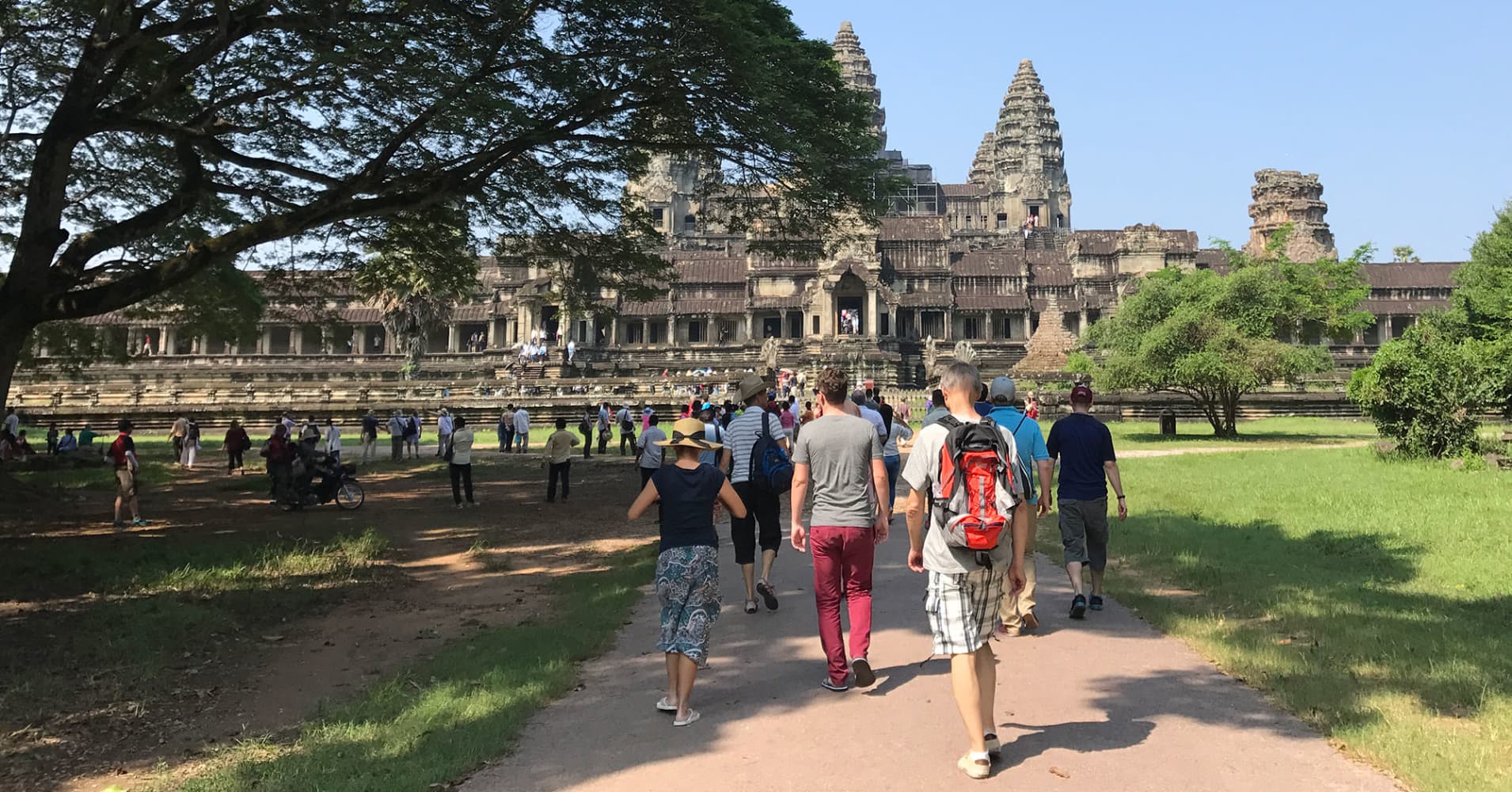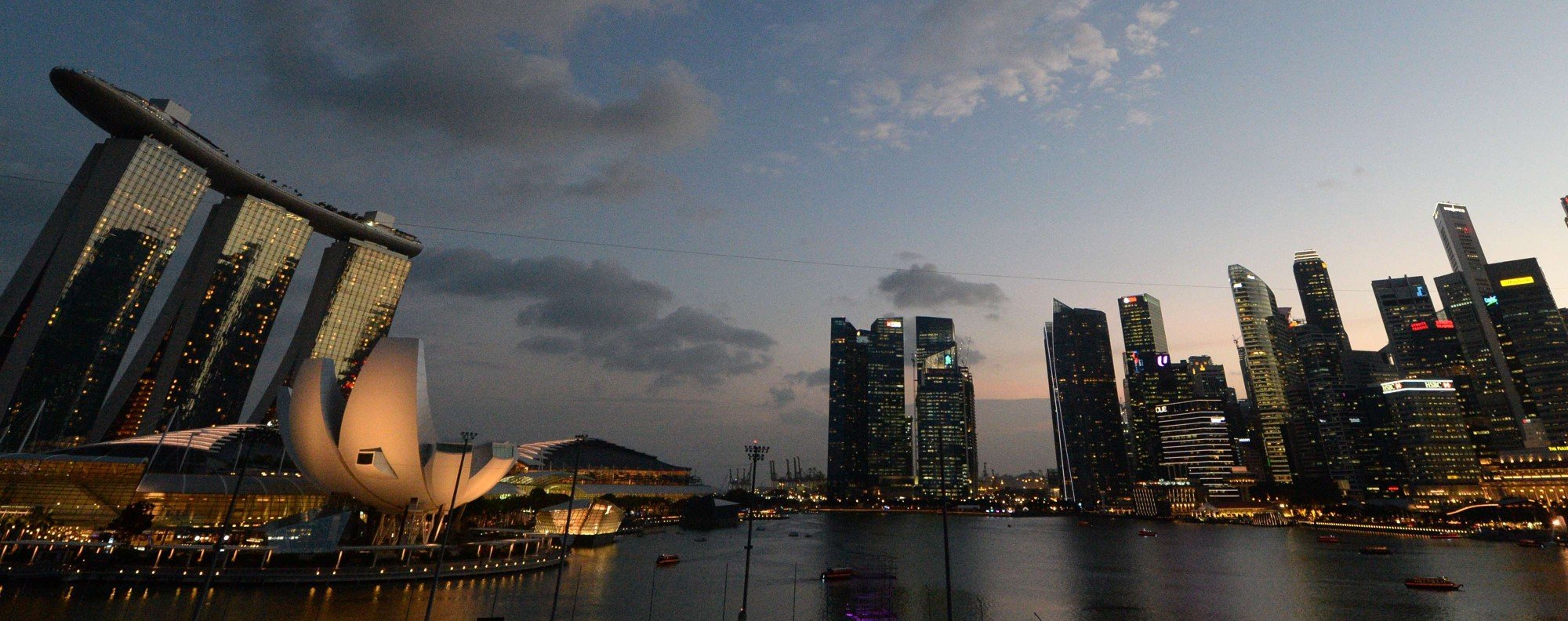The real estate markets of Southeast Asia -- including those in Thailand, Vietnam and Cambodia --have been booming in recent years, and development and investment in the region show no signs of letting up, wrote Alanna Schubach from Mansion Global online portal.
In its latest Emerging Trends in Real Estate report for the Asia Pacific region, PricewaterhouseCoopers calls the flow of capital into this part of the world "an embarrassment of riches." Survey respondents ranked Singapore highest among Asian cities for investment; last year, sales volume in Singapore rose 50%.
And now other markets in the region are emerging. Thailand, for instance, saw a 91% increase in inquiries from Chinese buyers, with cities like Chiang Mai, Bangkok and Phuket drawing particular interest. Chinese buyers are also investing heavily in Southeast Asian coastal cities like Sihanoukville, Cambodia, which experts see as tourist hubs in the making.
In Vietnam, a substantial increase in the country’s GDP and a tourism boom presage growth for the luxury housing market. The PricewaterhouseCoopers report noted a significant rental value increase in Ho Chi Minh City, with investors expressing confidence that the country’s economic growth will lead to an increase in property values.

And though Southeast Asia has been seeing growth for some time, now is still a good time to invest. The region’s potential for continuing appreciation remains high, given the large-scale infrastructure projects underway and the flood of speculation from Chinese and other foreign buyers.
"All of these are emerging markets, so they are likely to be more volatile than real estate in the U.S.," noted Carrie Law, CEO and director of Juwai.com. "When you’re talking about Thailand, Malaysia, or Vietnam, you can't expect a straight upward trend line in the property market over the long term."
That said, the pace of growth in these nations—and the investments their governments are making in infrastructure—means buyers can anticipate dramatic changes in the coming years, as well as strong investment potential.
"Ho Chi Minh City has been called ‘the new Beijing.’ Phnom Penh reminds some of New York in the ’80s," Ms. Law said. "We're talking about massive, transformational change as these economies shed their old, small skins and grow into their new, bigger, richer selves."
Indicators of Continuing Growth in Southeast Asia
One of the strongest indicators that Southeast Asian real estate markets are heating up is the surge in interest from foreign buyers, with the Chinese being the largest group.
China’s Belt and Road Initiative, through which the country is investing in infrastructure in the nations along the former Silk Road route, has helped to spur development in Southeast Asia. And Japan outpaces China when it comes to funding infrastructure projects in countries like the Philippines and Vietnam, Bloomberg reported.
"You have to look at Southeast Asian countries in context, considering what’s going on geopolitically," said Janet Minard, president of Jansam Capital, Inc., which is currently developing a residential project in Cambodia. "There’s so much money coming in from China and Japan—it’s like the Chinese are building cities overnight."
Funding from overseas has contributed to strengthening economies in a number of Southeast Asian countries, with sophisticated transit systems, better roads, and new airports drawing in tourism and business, as well as real estate investors.
"All the residential markets in Southeast Asia are basically still hot because of the overall economic growth in the region," said Yasushi Yamada, head of the Asia region for List Sotheby's International Realty. He pointed to Thailand, the Philippines, and Vietnam specifically as countries showing strong upswings.
Chris Liem, principal and owner of Engel & Völkers Hong Kong, said Vietnam, in particular, has the most promising real estate market in Southeast Asia.
"Its government policies, improving economy, high-quality goods, and demographics make this a really hot market for investors right now," Mr. Liem said.
He also sees a lot of growth in Thailand, particularly Bangkok, he said.

Chinese buyers are fueling much of Bangkok’s boom, having invested $10 billion in the city’s condos since 2015. And with construction on mass transit underway, residential developers are snapping up plots of land around new train lines.
Aside from growing demand from overseas investors, there are other signs that promise Southeast Asian markets will remain strong. The demographics of the region, for instance, suggest that the pace of growth and development will only speed up.
"Demographics show a large population of young people in China, strongly indicating high potential for future price growth," Mr. Liem said.
Beyond China, the average age of the population throughout Southeast Asia skews young, which bodes well for the domestic real estate market as young people come of age and begin renting and buying property.
"Most of the countries of this region have an average age of around 20 years old," Mr. Yamada pointed out. "And compared with the urbanization of developed countries, most of the major cities of this region have much lower rate," meaning that even in the major urban centers of Southeast Asia, there’s still plenty of room to grow.
The Long-Term Potential of Southeast Asia
The rapid pace of growth in the region may lead some potential investors to wonder whether this boom could fizzle out just as quickly as it began. But experts on the ground anticipate continuing, long-term strengthening of markets in Southeast Asia.
Having weathered a series of economic crises—including Asian currency devaluations in the late ’90s and the recession of 2008—the Southeast Asian region has taken steps to protect itself against similar challenges, Mr. Yamada said.
"People in Southeast Asia have learned a lot from these challenges and now the political and economic conditions, and the system, rules, and regulations are much improved and stabilized against a variety of problems, which means that I think that we would be naturally able to expect further and stronger growth in this region," he said.
China’s Belt and Road Initiative, furthermore, is boosting economic growth in Southeast Asia that experts forecast will benefit these nations for many years to come.
"It works by creating new trade and strengthening economic ties by opening investment channels with Belt and Road countries," Mr. Liem said. "With both Thailand and Vietnam sitting on the belt road, we forecast that these two will stay strong long-term."

Cambodia, too, benefits from a strategic location, with Phnom Penh becoming a hub within Southeast Asia. Chinese investors are now purchasing high-rises and luxury developments in the capital, along with other East and Southeast Asian buyers.
"There’s a 6.9% growth rate in Cambodia’s GDP, which is phenomenal," said Sam Suzuki, chairman of Jansam Capital. "There’s been an injection of capital in the first half of 2018, with $2.15 billion going into construction. The prices of land are creeping up quickly."
Even in Singapore, where the government instituted cooling measures to fend off the prospect of runaway home prices, the city-state remains attractive to locals and foreign investors, with both seeing good returns on real estate investments in recent years.
Though some volatility may be inevitable for developing markets like the ones in Southeast Asia, the region is still "a great economic story," Ms. Law said: "There is significant government investment in infrastructure development, additional investment from the Belt & Road Initiative, and economic growth driven by expanding middle-class populations. On top of that, Southeast Asian governments have been providing predictable leadership on the political and regulatory side."
Ownership Structures Vary in Southeast Asia
Investors are being lured to the region not only for the potential capital gain and diversification of assets, Mr. Yamada said, but also for lifestyle factors.
"For some people, the exotic, cultural, heartwarming atmosphere in Southeast Asia is a very critical attraction," he said. "Also, the cost of living is still reasonable, except for Singapore, where it is comparable with the world-class cities."

And despite its relatively higher cost of living, Singapore does offer low taxes, with no tax on inheritances and gifts, or on capital gains of most assets, Mr. Yamada added. After a recent slowdown, the city-state is showing signs of recovery, with home prices increasing 5.2% in 2017; the average price per square foot of a home in the city center is about S$2,119 (US$1,543).
Certain intangibles, like culture and natural beauty, can figure into the appeal of Southeast Asian nations for buyers, Ms. Minard agreed.
"I see Cambodia as a precious jewel, and the last vestige of Southeast Asian culture," she said. "When the country opened up to tourism in the 1990s, it stabilized more, and then backpackers and first-world tourists started pouring in. Today, the lifestyle quality is changing, with five-star resorts and shopping malls being built."
Beachfront locales like Cambodia’s Sihanoukville are also compelling to investors seeking a relaxed, coastal lifestyle, though buyers may face risks in the form of regulations and corruption, as a Property Report analysis points out.

Moreover, depending on the country, foreign buyers could encounter some bureaucratic challenges. In Thailand, Cambodia and the Philippines, for instance, international investors can own property, but not the land the property is built on, while in Malaysia, there is a set minimum price point for properties purchased by foreigners. In Vietnam, meanwhile, land is collectively owned, but foreign companies can buy the right to use land and then build on it.
Still, despite these hurdles, for buyers with a long-term horizon, the investment should pay off.
"Ownership structures are a little unusual for western investors," Mr. Liem said. "However, laws are changing to allow ownership of apartments by international buyers. Nonetheless, those with higher risk appetites are typically compensated by the higher returns in investment."
Source :


















